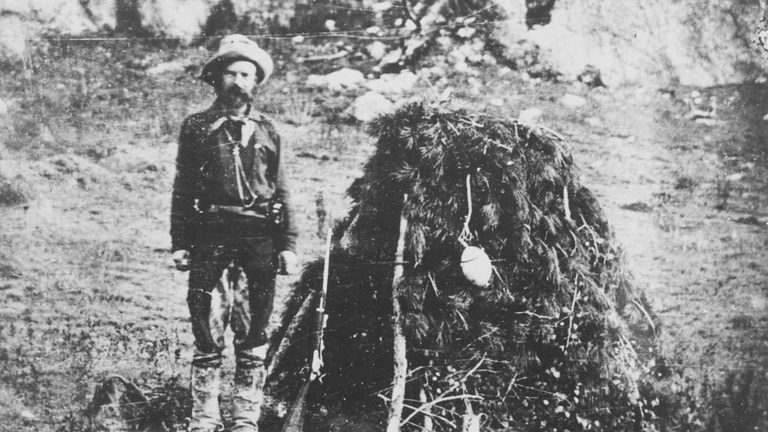In spite of a name that seems more whimsical than serious, the life and accomplishments of Valentine Trant O’Connell McGillycuddy are an enduring testament to strong character and remarkable compassion.
McGillycuddy was born to parents of Irish ancestry in Racine, Wisconsin, on February 14th of 1849; hence the name honoring St. Valentine. He excelled in his education and graduated from Detroit Medical School at the age of 20. He practiced medicine for a year and then taught at the medical college. It was at this time that he made the acquaintance of a pretty, blue-eyed lass—18 year-old Fanny Hoyt.
Valentine loved the outdoors. His desire to learn and explore led the lanky six-footer to accept a job with a geodetic survey crew in 1872 that was headed to the “Wild West.” He eventually became a surgeon and topographer for the International 49th Parallel Expedition surveying the boundary between the United States and Canada.
On this expedition, he first came in contact with the Lakota Sioux. This encounter made an impression on Doctor McGillycuddy which would serve him well in his later days. When the project was completed in Montana Territory in 1874, the survey crew journeyed down the Missouri River by steamboat to Bismarck, Dakota Territory, where they boarded a train and headed east to Washington, D.C. On this part of the trip, McGillycuddy learned many details of the recently completed expedition to the Black Hills led by Brevet General George Custer.
He joined the Jenney-Newton Black Hills survey in the summer of 1875 as contract surgeon and topographer. Under the escort of Lieutenant Colonel Dodge, the expedition had several other notable characters including Calamity Jane and California Joe.
One of the landmarks of the survey was Black Elk Peak, highest point between the Rocky Mountains and the Pyrenees of Europe. When the party reached Black Elk Peak, the industrious 26 year-old Doctor had a pine tree felled and used it as a ladder to scale the steep granite. This made Valentine McGillycuddy the first white man ever recorded to reach the summit of Black Elk Peak, 7,242 feet above sea level, a feat that Custer himself had not been able to accomplish the summer before. McGillycuddy assisted in the mapping of the region, noting that it was still considered a part of the Great Sioux Reservation.
Fresh from his Black Hills experience, McGillycuddy arrived in Detroit to wed Fanny Hoyt in the fall of 1875. The couple traveled to Washington where Valentine briefed military and governmental leaders on the expedition’s discoveries.

